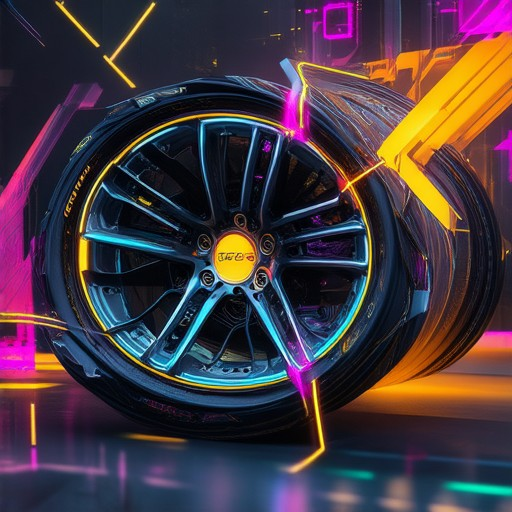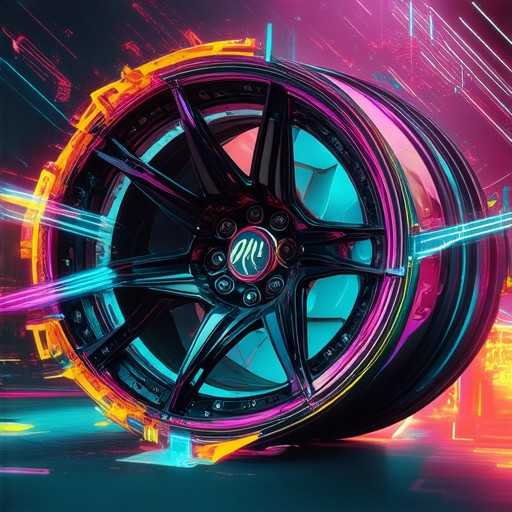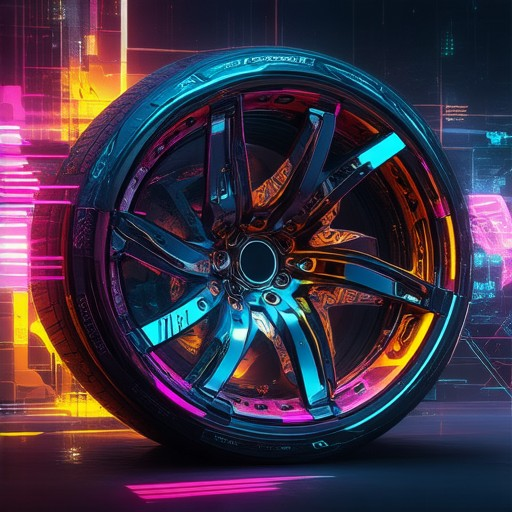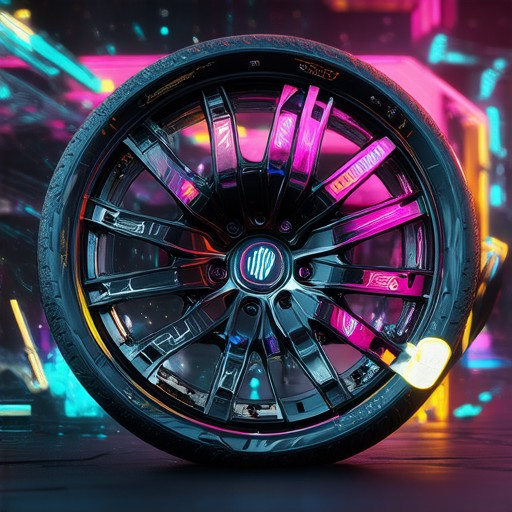When it comes to enhancing your vehicle’s performance and style, few modifications carry as much impact as choosing the right set of wheels. Among the many options available, multi-piece wheels are gaining popularity for their unique blend of aesthetics and functionality. However, before investing in this upgrade, it’s crucial to weigh the benefits against potential drawbacks and consider how well they align with your vehicle’s needs. Whether you’re aiming for a custom look or seeking enhanced durability, multi-piece wheels offer a range of possibilities. In this article, we’ll explore what multi-piece wheels are, their advantages, limitations, and how they compare to other types of wheels. We’ll also delve into legal and safety considerations to ensure you make an informed decision. By examining these factors, you’ll gain valuable insights into whether multi-piece wheels are the right fit for your vehicle.
Key Takeaways
– Contribute to explosions and ejections: Multi-piece wheels pose a severe safety hazard due to their potential to violently separate, risking injury or damage.
– Increase fuel usage: Their heavier weight reduces efficiency, leading to higher fuel consumption.
– Are costly: These wheels tend to be pricier than standard options, potentially straining budgets.
– Require more maintenance: Their complex design demands regular checks and care to prevent failures.
– Can cause imbalance: The multi-piece design leads to uneven wear and poor handling.
– May not fit all vehicles: Compatibility issues limit their use to specific makes and models.
– Pose significant safety risks: Legal restrictions often arise from their association with dangerous incidents.
– May violate regulations: Non-compliance with safety standards can result in fines or vehicle confiscation.
– Alternative styles exist: Deep dish or custom alloy wheels offer safer, stylish alternatives.
– Suitable for specific vehicles: Historically used in trucks, motorhomes, and agricultural machinery, they offer nostalgia and strength for certain applications.

What Are Multi-Piece Wheels?
Multi-piece wheels are precisely what their name suggests—they consist of multiple individual components that come together to form a complete wheel. Unlike traditional single-piece wheels, these are built by combining several parts, such as cast aluminum centers, forged rings, or steel spokes, to create a customized look and improved performance.
Benefits of Multi-Piece Wheels
- Customization Options: Multi-piece wheels allow for endless customization, enabling enthusiasts to mix and match components to achieve a unique style or performance enhancement.
- Improved Performance: By allowing for better heat dissipation and weight distribution, multi-piece wheels can enhance braking performance and reduce thermal distortion.
- Versatility: These wheels are suitable for a variety of applications, ranging from daily drivers to high-performance vehicles, making them a popular choice among car enthusiasts.
- Trendy Design: Multi-piece wheels often feature eye-catching designs, such as two-tone finishes, polished accents, or intricate patterns, making them a fashion statement on wheels.
Popular Applications
Multi-piece wheels are widely used in various contexts, including:
- Custom Cars: Enthusiasts often opt for multi-piece wheels to give their vehicles a unique appearance and improve aerodynamics.
- Racing Vehicles: In competitive settings, multi-piece wheels are valued for their strength and lightweight properties.
- Electric Vehicles: Due to their modular design, they are increasingly popular in electric cars for easier maintenance and customization.
Brands and Competitors
Incubus Wheels is a leading provider of premium multi-piece wheels, offering a wide range of styles and sizes to suit every vehicle. While there are several competitors in the market, Incubus Wheels stands out for its commitment to quality and innovation. Other notable brands include [Competitor Name](https://www.competitorname.com/) and [Another Brand](https://www.anotherbrand.com/), each offering their own take on multi-piece wheel design.
For more information on Incubus Wheels and their products, visit our official website at Incubus Wheels . Explore our collection of customizable multi-piece wheels and discover how they can elevate your vehicle’s performance and style.
Are 3 Piece Wheels Worth It?
When considering whether three-piece wheels are worth it, it’s essential to evaluate their benefits compared to other types of wheels. Here are some key factors to consider:
- Durable Construction: Three-piece wheels are typically constructed with high-quality materials, making them more resistant to damage. This durability can extend the lifespan of your wheels, reducing the need for frequent replacements.
- Cost-Effective Repairs: In the event of damage, three-piece wheels often allow for cheaper repairs. Instead of replacing the entire wheel, you may only need to replace the damaged portion, saving money in the long run.
- Customization Options: Many three-piece wheels come with customizable designs, allowing you to personalize your vehicle’s aesthetic. This can increase the overall value of your car or truck.
- Better Weight Distribution: Some three-piece wheels are designed to enhance weight distribution, potentially improving handling and performance, especially on larger vehicles.
Incubus Wheels offers a variety of three-piece wheels that combine style and functionality. Their products are crafted to meet the needs of car enthusiasts who desire both aesthetics and performance. Whether you’re looking to customize your ride or simply upgrade your wheels, three-piece options can be a worthwhile investment.
Competitors like Vivid Racing and others also offer three-piece wheels, so it’s worth comparing features and prices to find the best fit for your vehicle. Ultimately, the decision depends on your specific needs and preferences, but three-piece wheels often deliver value through their durability and repair savings.

What is a Multi-Piece Rim Wheel?
A multi-piece rim wheel is a type of vehicle wheel constructed from two or more individual components, typically including a side ring or locking mechanism that secures the tire in place when inflated. This design allows for greater durability and flexibility compared to traditional single-piece wheels.
How It Works
- The multi-piece wheel consists of a central hub or rim assembly connected to a detachable side ring.
- When the tire is inflated, the side ring interlocks with the wheel’s components, holding the tire securely in place.
- This setup enables easier installation and removal of the tire, particularly useful for various applications like off-road vehicles or high-performance cars.
Benefits
-
- Durable construction suitable for demanding environments
Comparison with Single-Piece Wheels
- While single-piece wheels are simpler in design, multi-piece wheels offer distinct advantages in strength and adaptability. They are often preferred in scenarios requiring frequent tire changes or high-stress usage.
Applications
- Commonly found in trucks, SUVs, and off-road vehicles due to their robust construction.
- Ideal for custom wheel setups where unique styling or functionality is required.
Choosing the Right Multi-Piece Rim Wheel
- Consider factors like intended use, budget, and desired aesthetics when selecting a multi-piece wheel.
- Visit trusted automotive resources like Incubus Wheels for expert recommendations and a wide selection of options.
By understanding the features and benefits of multi-piece rim wheels, drivers can make informed decisions tailored to their specific needs and preferences.

Disadvantages of Split Rim Wheels
While split rim wheels offer unique styling and customization options, they come with several potential drawbacks:
1. Explosion Risk
The primary and most critical disadvantage of split rim wheels is the risk of violent separation under certain conditions. This can lead to the explosive release of high-pressure air and the ejection of component parts, posing significant health and safety hazards.
2. Weight and Fuel Efficiency
These wheels are generally heavier than standard alloy wheels, which can negatively impact fuel efficiency. The added weight requires more power to move the vehicle, consequently increasing fuel consumption.
3. Higher Cost
Split rim wheels are often more expensive than traditional wheels due to their complex construction and customization options. This can be a financial disadvantage for many consumers, particularly those on a budget.
4. Maintenance Complexity
With multiple components, split rim wheels may require more frequent maintenance. Drivers must regularly check for loose nuts, bolts, and other moving parts to prevent mechanical failure. Additionally, the risk of damage from curbs or potholes is higher, necessitating extra caution during driving.
5. Imbalance Risk
The multi-piece design increases the likelihood of imbalance, leading to uneven tire wear and potential handling issues. This can reduce the overall performance and ride quality of the vehicle.
6. Limited Availability
Not all vehicles are compatible with split rim wheels, limiting their availability based on the make and model of the car. This can restrict customization options for certain drivers.
When considering split rim wheels, it’s essential to weigh the aesthetic benefits against these potential downsides to determine if they align with your driving preferences and budget.
Why Are Split Rims Outlawed?
Split rims, those distinctive wheel designs featuring a separate rim around the wheel face, are often subject to legal restrictions in many regions. These bans typically stem from safety concerns, regulatory compliance, and public safety measures.
Safety Concerns
The primary reason for the outlawing of split rims is their potential to cause safety hazards. The open design of split rims can lead to loose components, increased risk of theft, and tampering. In extreme cases, they may detach during operation, posing a danger to drivers and pedestrians.
Regulatory Compliance
Many jurisdictions enforce strict vehicle safety standards. Split rims may not conform to these standards, particularly regarding structural integrity and secure fastening mechanisms. Authorities often prohibit their use to prevent accidents and ensure vehicles meet minimum safety requirements.
Economic and Practical Considerations
Additionally, split rims may be deemed non-compliant with certain vehicle codes, requiring owners to remove them or face fines. Their popularity among modifiers often leads to misuse, further justifying their prohibition in some areas.
Alternatives and Adaptations
For those seeking a similar aesthetic, alternative wheel designs like deep dish wheels or custom alloy wheels are often recommended. These options align better with safety standards and are more readily accepted by law enforcement agencies.
Always consult local transportation laws and regulations before installing split rims to avoid penalties and ensure compliance. Prioritizing safety and legal adherence remains paramount for all drivers.

What Vehicles Use Split Rims?
Split rims, also known as bead seat wheels, were historically used in various heavy-duty applications due to their unique design. These wheels feature a bead seat configuration, which securely holds the tire in place without the need for traditional rubber gaskets.
Vehicles That Commonly Use Split Rims
- Trucks: Many older models of pickup trucks, such as the Ford F-150, Chevrolet Silverado, and Dodge Ram, frequently utilized split rims. These wheels were particularly popular in configurations requiring heavy-duty tires for off-road use or towing purposes.
- Motorhomes: Class A, B, and C motorhomes often featured split rims, as they supported larger tires needed for rough terrain and heavy loads.
- Agricultural Machinery: Tractors and harvesters commonly employed split rims due to their durability and ability to accommodate oversized tires for demanding farming conditions.
Why Are Split Rims Used?
Split rims were favored for their simplicity and strength. The bead seat design allowed for easy installation of tires without additional hardware, making them ideal for applications where quick assembly was essential. Today, while less common, they remain sought after by enthusiasts of vintage and classic vehicles.
For more information on custom wheels and their applications, explore our guide to custom wheels . If you’re interested in heavy-duty solutions, check out our selection of heavy-duty truck wheels .




0 Comments